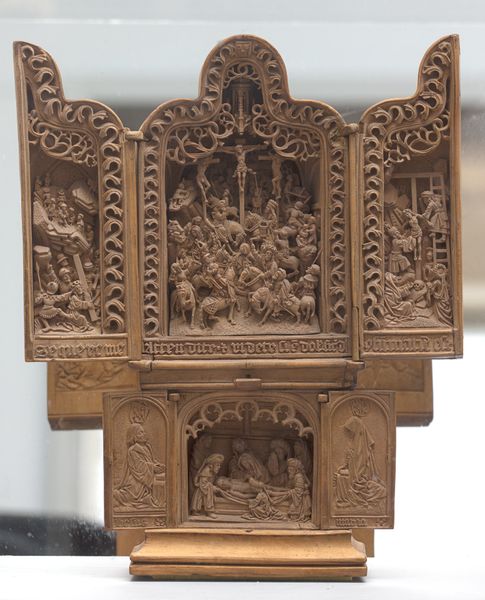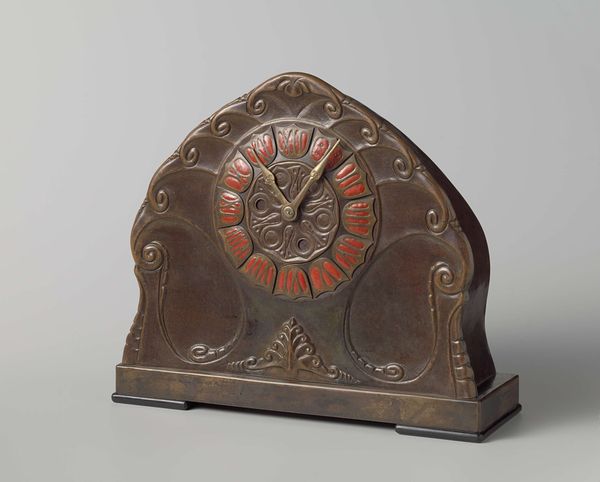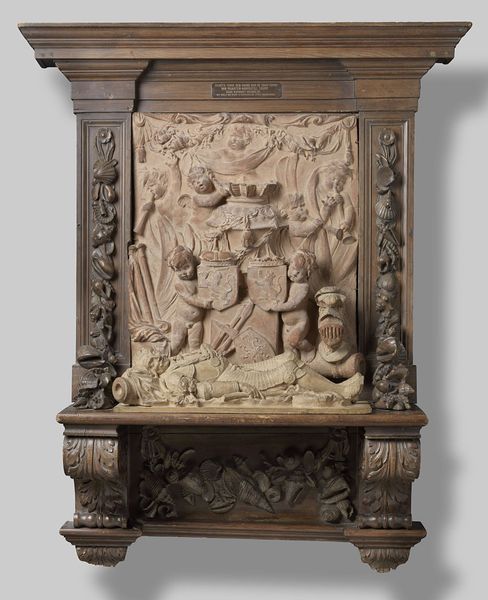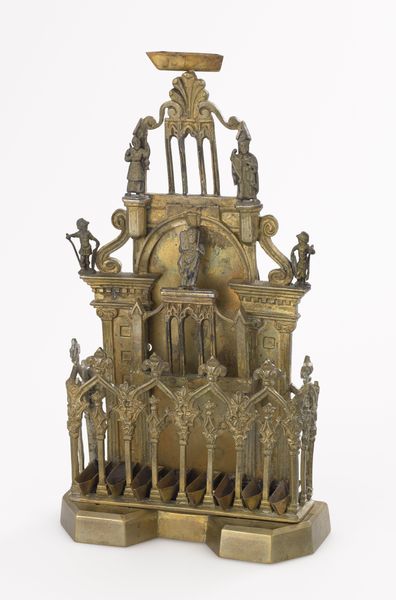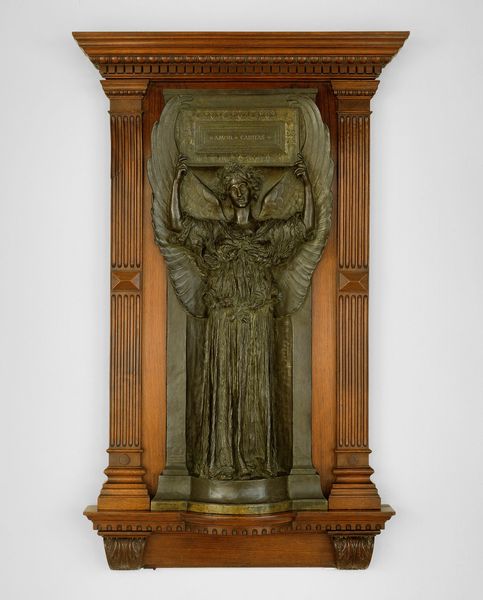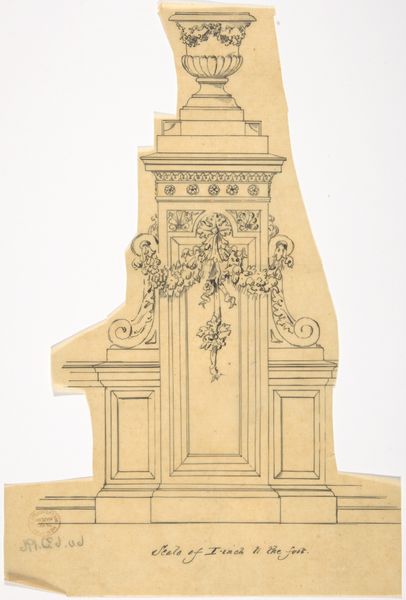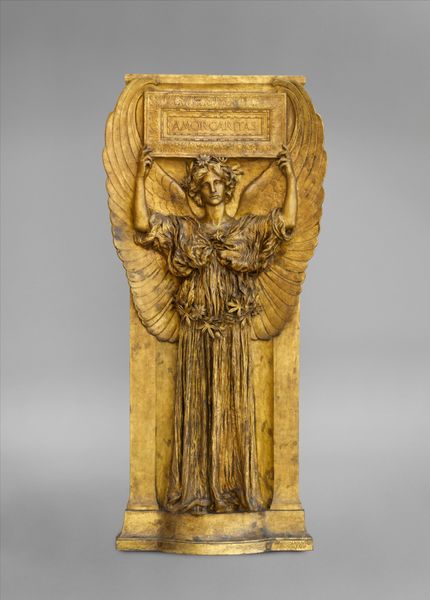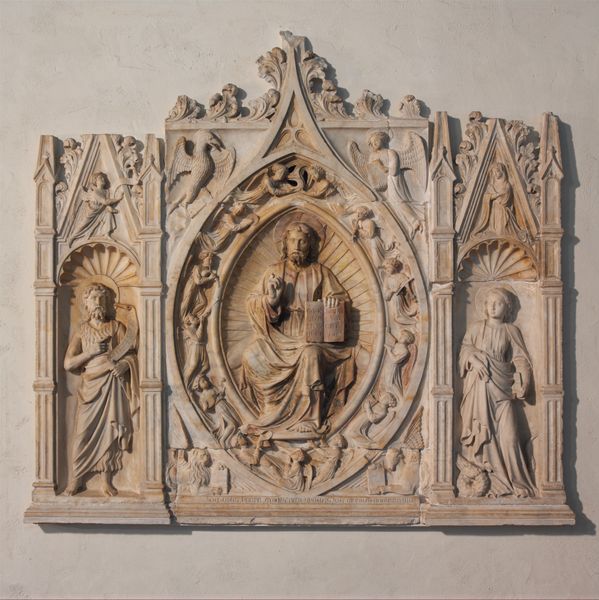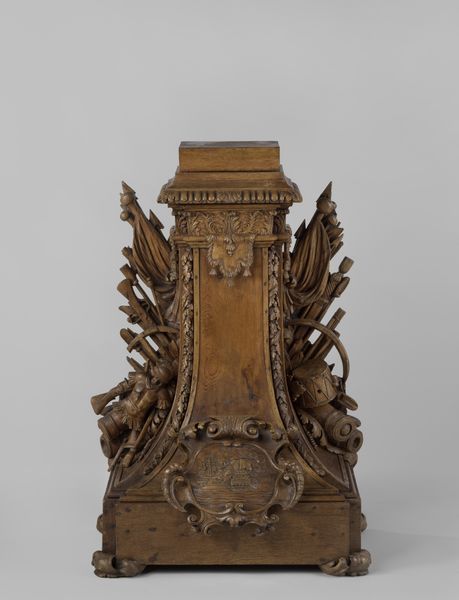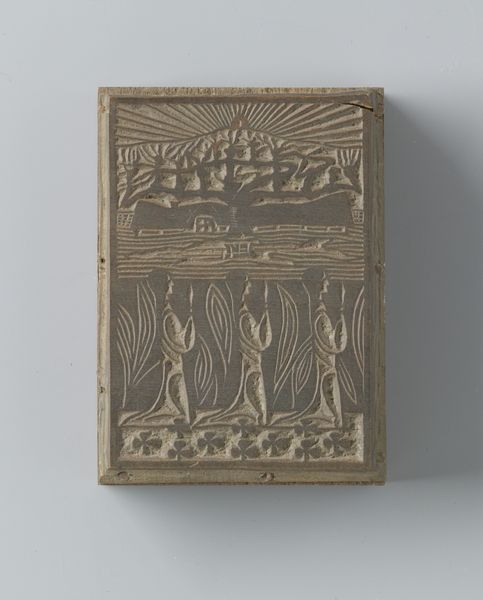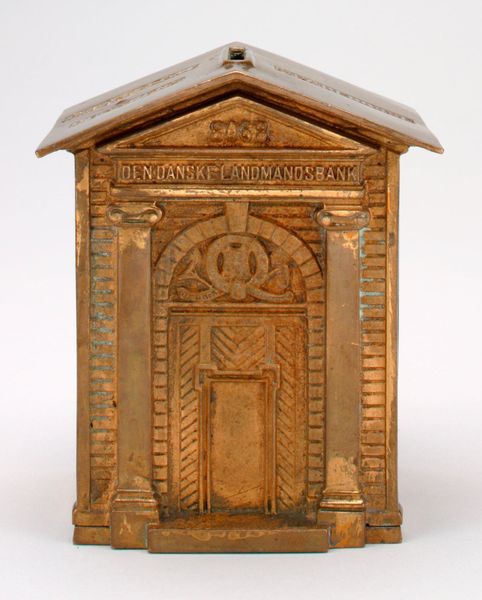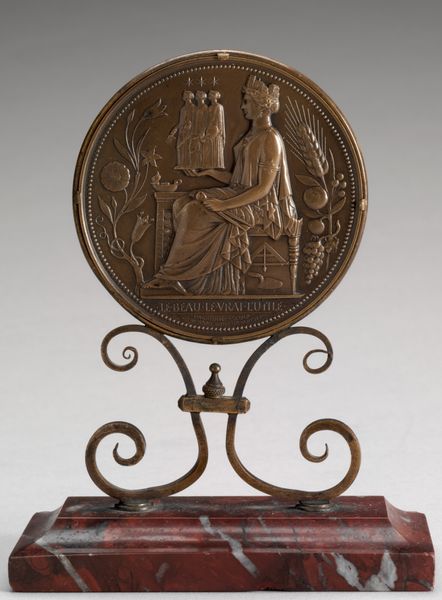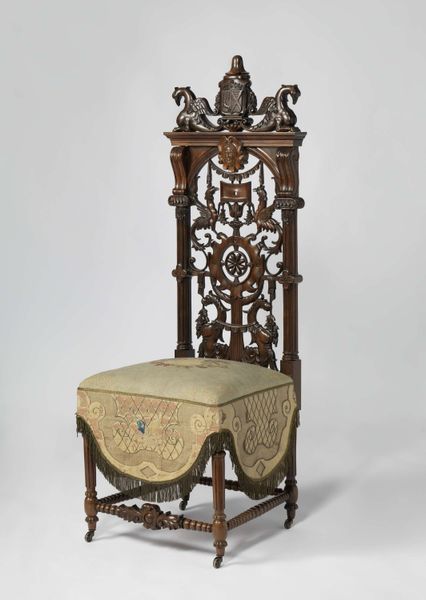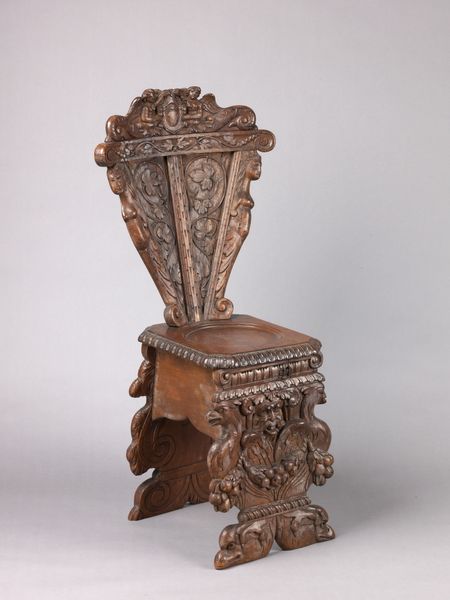
carving, tempera, relief, sculpture, wood
#
medieval
#
carving
#
tempera
#
sculpture
#
gothic
#
relief
#
figuration
#
sculpture
#
wood
#
statue
Dimensions: height 182 mm, width 145 mm, width 85 mm, depth 45 mm
Copyright: Rijks Museum: Open Domain
Curator: This striking "Triptych," dating from around 1500 to 1530, is attributed to Adam Dircksz. It combines the tactile qualities of wood carving with the vibrancy of tempera paint. My immediate reaction is its intricacy and formal rigor. The way the artist compartmentalizes the narrative within these architectural frames, it’s almost like a miniature stage. Editor: It certainly feels devotional. There's a concentrated stillness about it. The triptych format itself feels charged with religious significance, almost like altarpieces and private worship colliding to embody lived piety during times when few had access to religious texts. The figures here feel intentionally rigid. Curator: Precisely. The hierarchical scale, the carefully arranged drapery, it’s all so controlled. Observe how Dircksz employs line and texture to delineate form. The Gothic style framework embraces but simultaneously traps the scenes. Consider the surface: each indentation catches light, bringing the figures to life and drawing the eye along each figure's vertical length. Editor: That reminds me about medieval notions of women in particular. It is hard not to consider how Dircksz utilizes these women's bodies and actions in the side panels as moral exemplars for conduct within the social codes of that period. Each are haloed, queen-like. Do we see an embrace, perhaps unconsciously, of a growing social shift, when one begins to consider a new kind of autonomy through choices offered by increasingly diversified labor practices? Curator: An intriguing possibility. From a structural viewpoint, this Triptych's strength lies in its considered articulation of surface and its careful employment of perspective and ornament, so in terms of a pure study of design, it's an excellent work. Editor: Indeed. Ultimately, beyond its aesthetic merit, I believe its power is as a symbolic mirror, capturing and reflecting not only the spiritual ideals of the time but also, perhaps, a growing shift in how religious stories reinforced, or failed to adequately shape, societal assumptions.
Comments
rijksmuseum about 2 years ago
⋮
upper left: St Barbara, upper middle: Virgin in Sole, upper right: St Catherine, below: St John, right wing, exterior: St Christopher, left wing, exterior: St George
Join the conversation
Join millions of artists and users on Artera today and experience the ultimate creative platform.
